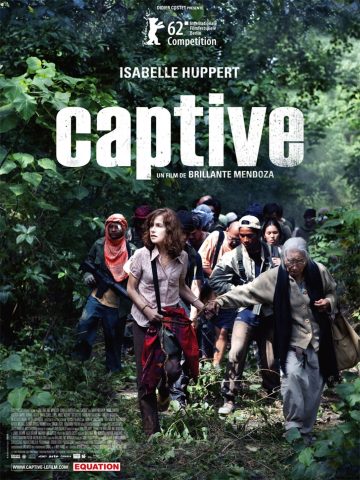Rating: 2.0/4.0
In the wake of Cinemalaya, Filipino audiences were exposed to a different film genre known for its poignant portrayal of Filipino issues and subject matter that delivers a fresh and bold voice that captures the obscure.

The LaSallian had the opportunity to watch an exclusive premiere for one of the biggest indie films to come out in theaters this year. With his latest project, award winner and controversial director, Brillante Mendoza again dares viewers to keep their eyes on the screen.
To provide an ideal preview of the story, think of the worst vacation anyone could have in the Philippines. Imagine spending your break on a luxurious beach. The perfect getaway, and enter the Abu Sayyaf. They storm your paradise just before dawn, taking you and 21 others hostage, cutting your dream short, but nonetheless extending your vacation—as you are held captive for 376 days.
Based on one of the most controversial hostage taking incidents in the country the movie instantly grabs hold of the audience from the first scene to the last as it explored the events that had and could have happened. Concise and raw, the film depicts the kidnapping of several vacationers and missionaries their grueling and horrendous months inside the Mindanao jungle in the viewpoint of Thérèse Bourgoine, the Christian missionary protagonist.
In the film, Bourgoine, played by two-time Cannes best actress, Isabelle Huppert, would constantly test her captors’ patience, and help other hostages keep theirs. Huppert plays her part with grit and intensity, showing a full range of emotions that provided the only outlet for audiences to feel connected and agitated to find out things that could possibly go wrong.
Why fix, when it is not broken? This could be Mendoza’s personal mantra, as he stays in his comfort zone and robs us of ours by again, highlighting our country’s flaws and showing audiences the darker shade of the Philippines. It seems that local tourism patrons would have to create more memes to explain terrorism as more fun in the Philippines, as Mr. Mendoza creates a terror for tourists, by immediately showing an all, but exaggerated incompetence that our law enforcement tries to hide.
But what really provided the shock value are the scenes that tackled issue of religion. Putting both Islamic and Christian beliefs in the forefront, we see a mutual distaste that both practitioners have against the other religion, which rings true to the social condition in the Philippines.
With that said, however, Captive does not really show viewers anything more than those rare gasps. The film is unable to properly send out the messages it wants to convey.
Though the conflict between religions and the prey-predator concept are true, the manner in which the film was made did not help audiences absorb the issue, as the film keep bombarding the audience with “shocking” scenes as if its intention all along is to make viewers cry and vomit inside the theater. And to be honest, for a film that wants to affect the mainstream audience, labyrinths of visual double-entendres, is not the way to go.
But amidst the distracting flash, the simplistic scenes and quieter moments shine. Something as simple as Therese receiving a cracker from a patient after days of travelling through the seas, unable to accept her fate, shows a sense of humanity that only Mendoza could deliver with such hush. These scenes speak with high volume to the audience.
But then we go to possibly the most important scene in the movie. Another simple conversation between Therese and one of her captors, a young boy pushed in to the grasps of the religion war. It all goes perfectly as planned, being built up as a mother-child relationship that ended with a touching talk about how they spend a typical New Year as her year in captivity draws near. It became, however, very unsettling as Therese asks the boy to lie down on her lap. This could have been delivered without the awkward sexual tension that will leave you with a bad taste in your mouth.
Not being a fan of today’s movies that are shot in one dimension, the director chose to film Captive through a shaky hand-held camera, a sign of Mendoza’s love of viewpoints. He also uses a wide array of camera angles that depict the lush and vibrant jungle backdrop that calms the audience before the storm in each scene. The film also used various animal symbolisms that complimented the tone. With a high production value of almost 50 million, making it Mendoza’s most expensive film to date, the film is smoothly and thoroughly polished to a point that you feel like the movie is not too far off from some Hollywood war movie.
Overall, The movie intended well. It wanted to show that we are still not living in peace. But it is not convincing enough. The film made viewers aware of its own views, and distanced itself from others, considering its intent to convey a difficult issue in perspectives. It, however, succeeded in giving the audience a glimpse of a certain possibility.
